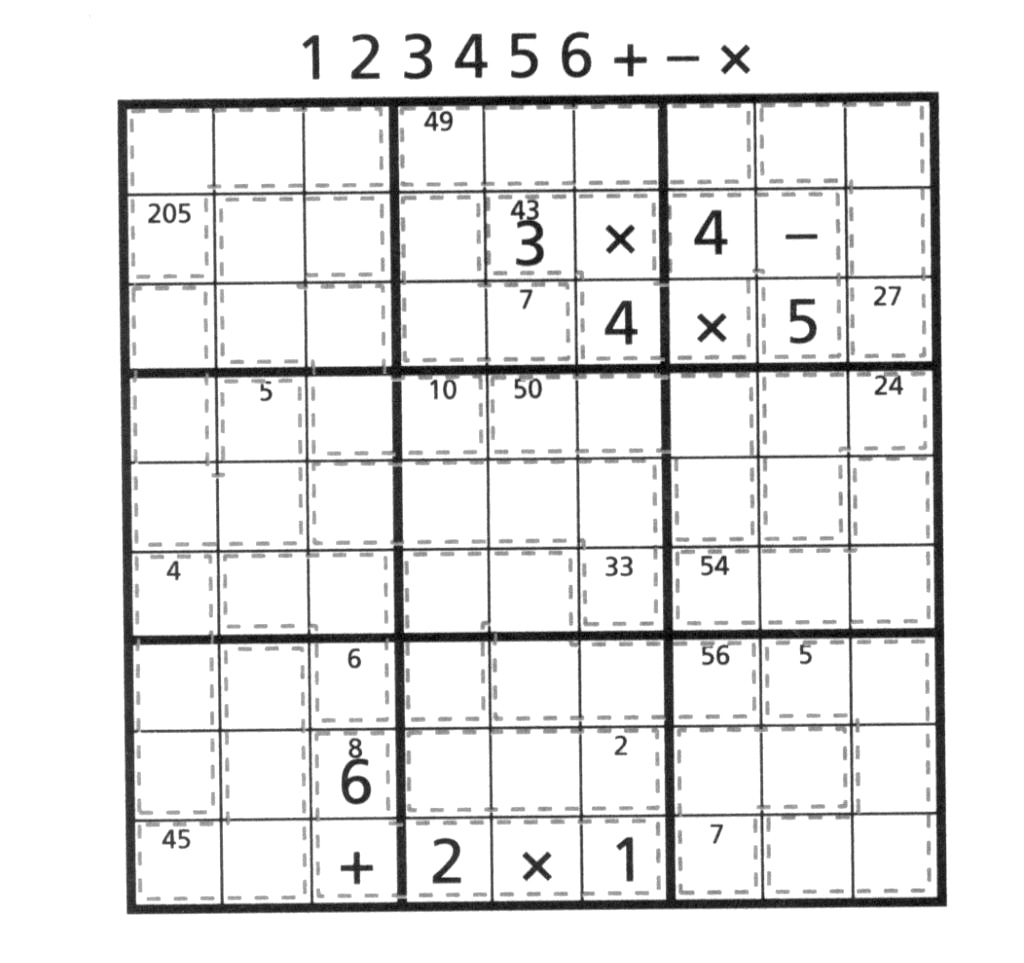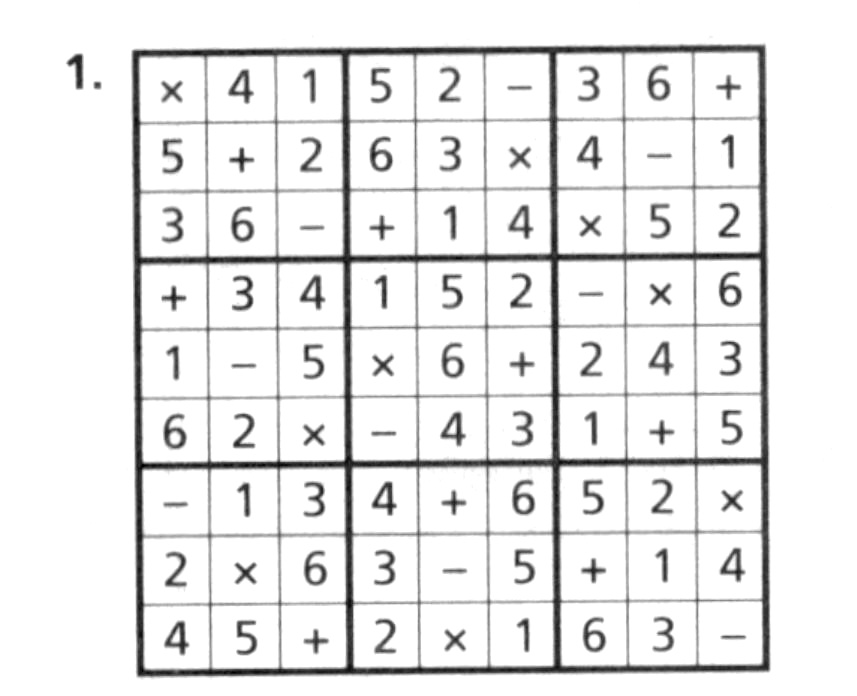You are given six digits and three mathematical operators (shown above the grid). When the
puzzle is correctly solved, every digit and operator given must appear exactly once in each row, column, and heavily
outlined 3x3 box.
Furthermore, the grid is divided into paths, each with a number at one end. The numbers in each path, when read from
the end with the number to the other end, must form an equation that equals the number at the start of the path. For
example, if the number at the start of a three-space path were 16, you could fill the three spaces with "9 + 7" or "8 x 2. "
The plus and minus signs never denote a positive or negative number; they are strictly used to add and subtract. As in
math, multiply and divide in order first, then add and subtract. Consecutive digits mean a multi-digit number. Read them
in the order of the path, not always across or down. For example, the equation near the top of the puzzle reads
"3 x 4 x 4 -5 = 43." You might end up with a fraction during a calculation, but the end result of the calculation will be
an integer.
Some solving hints: Operators never begin or end an equation, and they can't be consecutive to each other. As with any
sudoku puzzle, and especially with these puzzles, solving involves finding constraints and eliminating choices.

Solution to the Problem:

Correctly solved by:
| No one |